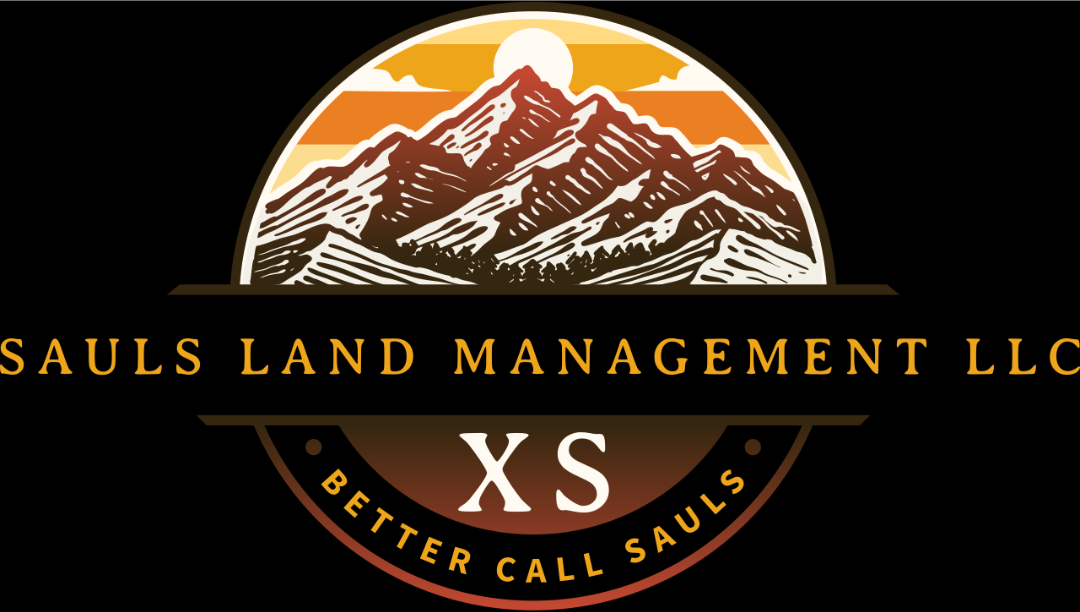Looking out your window and seeing brown, patchy turf where a vibrant lawn once thrived? Don’t panic—you don’t have to rip it all out and start from scratch. Many struggling lawns in Sevierville, TN can bounce back with the right care and a few proven lawn rescue strategies.
The secret? Lawn aeration, overseeding, and fertilization—done at the right time and in the right way. At Saul’s Land Management LLC, we specialize in bringing tired lawns back to life. Let’s show you how to do it.
Table of Contents
1. Start with a Soil Test and Lawn Evaluation
Before you bring out the seed or fertilizer, you need to know why your lawn is struggling.
Possible causes of lawn decline:
- Soil compaction
- Poor drainage
- Drought stress
- Lawn diseases or insect damage
- Low soil nutrients or improper pH
A professional soil test and lawn evaluation from Saul’s Land Management can save you time and money by identifying the root issue before applying the wrong fix.
2. Core Aeration: The Breath of Fresh Air Your Lawn Needs
Dead-looking lawns often suffer from compacted soil, especially after a hot, dry summer or frequent foot traffic. When soil is too dense, air, water, and nutrients can’t reach the roots—choking your lawn.
What is core aeration?
- A machine removes small plugs of soil from your lawn.
- These holes reduce compaction and allow nutrients and oxygen to reach the root zone.
- Aeration also creates the perfect seedbed for overseeding.
Best time to aerate in Sevierville:
Fall and early spring, when cool-season grasses like Tall Fescue and Bluegrass are actively growing.
3. Overseeding: Filling in the Bare Spots
Once your lawn is aerated, it’s time to give it a fresh start with overseeding.
What is overseeding?
- Spreading new grass seed over existing turf
- Helps fill in dead areas and thicken up thin grass
- Introduces disease- and drought-resistant varieties
Tips for successful overseeding:
- Choose the right grass blend for our region (we’ll help with that!)
- Keep the seed moist for the first few weeks—shallow, daily watering works best
- Avoid mowing until the grass is at least 3 inches tall
Get professional seeding help from Saul’s Land Management to ensure optimal seed-to-soil contact.
4. Fertilization: Feed the Comeback
Your lawn is a living organism, and like any recovering patient, it needs the right nourishment. That’s where fertilization comes in.
The lawn recovery fertilization plan:
- Apply a starter fertilizer rich in phosphorus to boost root growth
- Switch to nitrogen-rich feed in a few weeks to encourage green top growth
- Avoid over-fertilizing—too much can burn new seedlings
Fall is an ideal time to fertilize in Sevierville, as cooler temps and morning dew help grass absorb nutrients more efficiently.
5. Maintain with Care: Don’t Mow It Back to Death
Even after you start to see green returning, your lawn still needs gentle treatment.
Keep your lawn recovery on track:
- Mow high: Keep blades at 3–4 inches to protect new roots
- Water deeply but infrequently: 1–1.5 inches per week, early in the morning
- Avoid heavy foot traffic while grass is establishing
If you’re not sure how to adjust your watering schedule or mowing height, just give us a call—we’re happy to guide you.
Don’t Give Up on Your Lawn—Let’s Bring It Back Together
If your lawn looks dead, there’s a good chance it’s just dormant, depleted, or compacted—not gone for good. With proper aeration, overseeding, and fertilization, your yard can go from crispy and brown to lush and green in a matter of weeks.
Call Saul’s Land Management LLC today at (865) 280-0428
Or visit saulslandmanagementllc.com to schedule your lawn recovery consultation.
Let’s breathe new life into your lawn—without a complete do-over. You’ll be amazed what a little local expertise can do.

